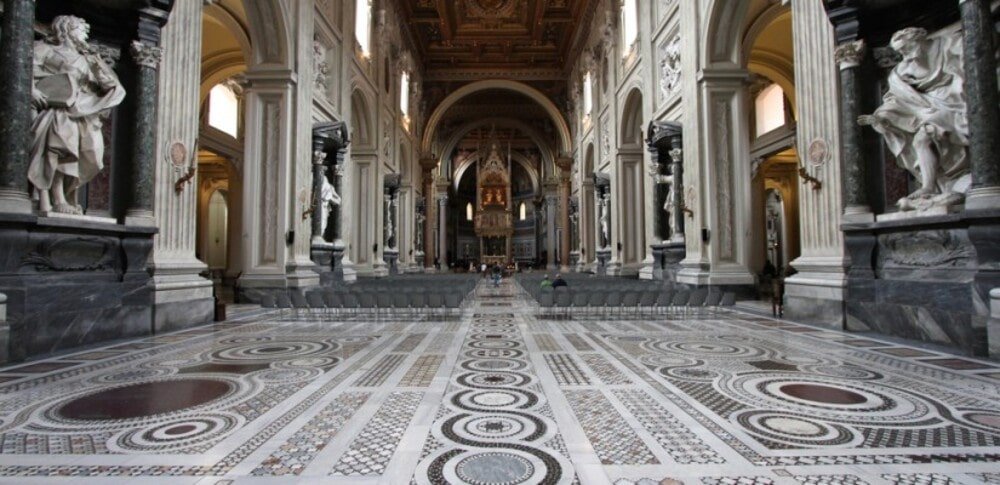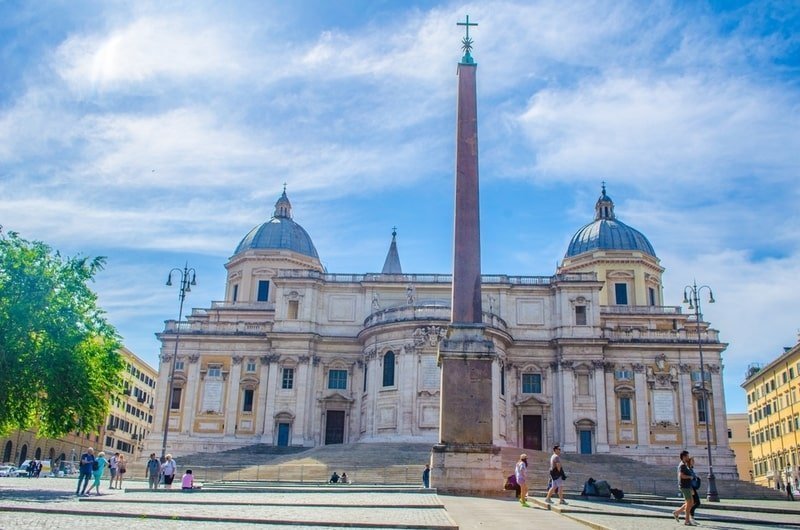The Basilica of St. John Lateran (Basilica di San Giovanni in Laterano), is the official church for the city of Rome. Like any of Rome’s papal basilicas, the Basilica of St. John Lateran has been named by the pope to hold spiritual or historical value. It easily earns this status because St. John Lateran is the oldest major basilica and serves as the seat for the Bishop of Rome, the Pope.
Located very close to the Colosseum and another famous church, the Basilica of San Clemente, visitors here can find not only sources of church history, but also ancient Roman history.
History
Why was St. John Lateran built?
The Roman emperor Constantine had the first version of St. John Lateran built in the early fourth century AD. Because of this early construction, the Basilica of St. John Lateran is considered the oldest basilica in Rome, and served as the headquarters of the Catholic Church before Vatican City became its own country.
Even the basilica’s Baptistery, where early Christians would be brought into the church, was the only one in Rome for many years after it was completed.
An earthquake in 897 and two fires in the fourteenth century meant that reconstruction of the Basilica of St. John Lateran was needed. The strongest effort to rebuild the basilica was by Pope Sixtus V in the sixteenth century. This new version, that can be seen today, honored the original basilica built by Constantine by keeping its same dimensions and floor plan.
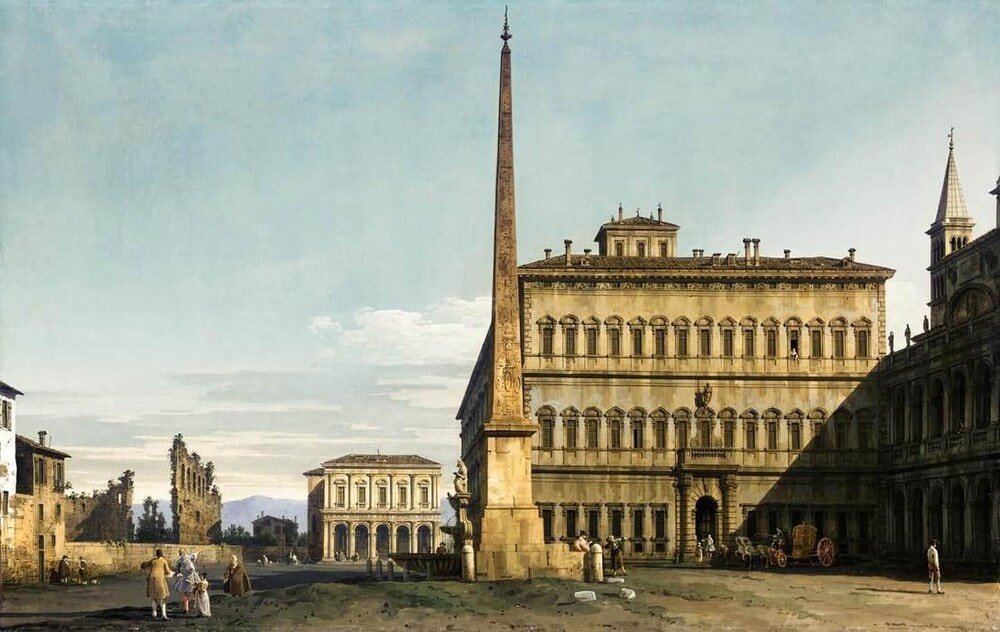
Connections to Ancient History
Although the Basilica of St. John Lateran standing today is from the sixteenth century, there are pieces of ancient history that survive and are found in and around the basilica.
The first is the obelisk outside the basilica. Dating back to the fifteenth century BC, it was brought to Rome from Alexandria in the fourth century AD. But St. John Lateran is not the only place to find an obelisk in Rome. With eight ancient Egyptian and five ancient Roman obelisks (and other more modern ones), Rome is the city with the most obelisks in the world. Some other obelisks can be seen in St. Peter’s Square, Piazza del Popolo, Piazza Navona, and the Spanish Steps.
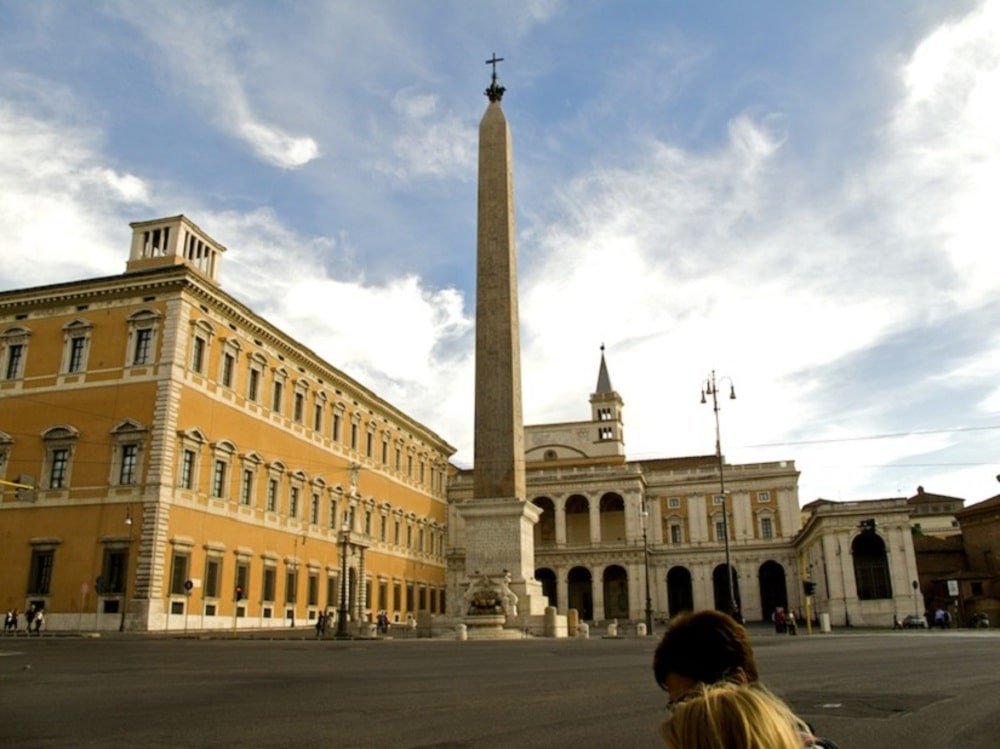
A more unique addition to St. John Lateran itself is its central doors, which originally belonged to the Curia Julia, or Senate House. These large bronze doors were transported from the Roman Forum to St. John Lateran in 1660, where they remain today.
As a major Catholic Basilica, there are also relics, pieces of or items used by a particular saint or holy person, housed inside St. John Lateran that attract Catholics year round. According to legend, some of these relics include the heads of saints Peter and Paul, and wood from the table used in the Last Supper.
The Holy Steps
The Holy Steps (Scala Santa) are a series of 28 marble steps located very close to the Basilica of St. John Lateran. Brought to Rome by St. Helena in 326 AD, the steps are believed to be from the praetorium of Pontius Pilate, and the stairs that Jesus walked during his Passion.
The Holy Steps and the private chapel at the top attract many Christians every year, serving as another important site to visit while in Rome.
The differences between St. John Lateran and St. Peter’s Basilica
Although St. John Lateran and St. Peter’s Basilica are both major basilicas in the city of Rome and host opportunities to see the pope, there are some differences that keep them from being duplicates from one another.
The Basilica of St. John Lateran is where the pope preaches as the bishop of Rome. As the oldest basilica in Rome, it was the pope’s primary residence until the fourteenth century when they moved to the Vatican.
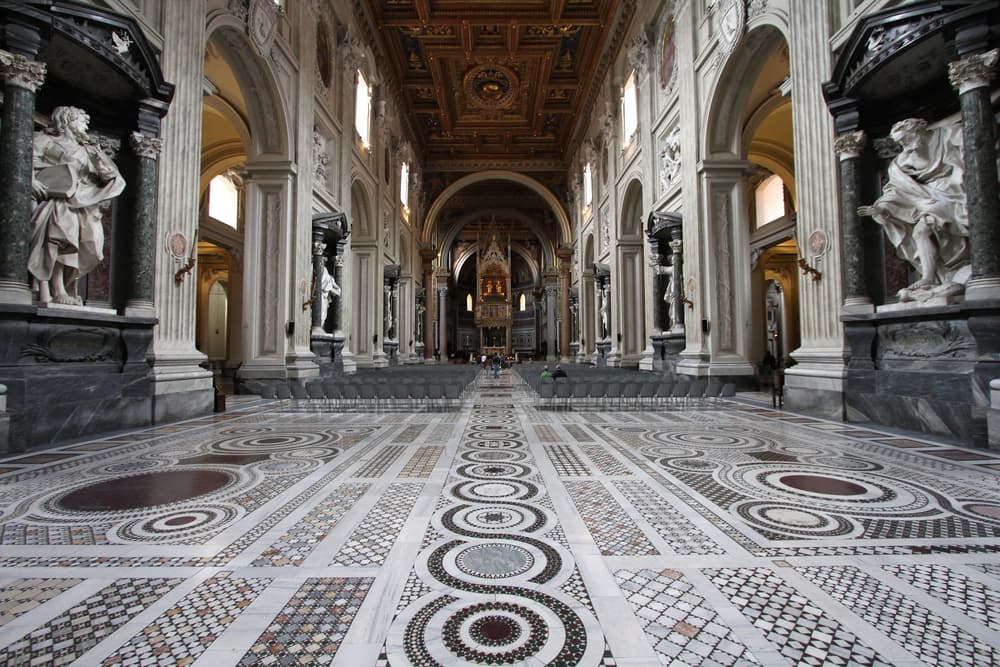
As the more modern headquarters of the Catholic Church, it is at the Vatican that the pope speaks not only as the Bishop of Rome, but as the head of the Roman Catholic Church.
Useful Info
OPENING TIMES:
Open Daily 7:00 am - 6:30 pmFAQs
What does Lateran mean?
The name “Lateran” comes from the Laterani family, who originally owned the land. But when their land was lost, the land was given to the Bishop of Rome to build the basilica.
What makes a basilica?
There are two answers to this: one architectural, the other denominational.
Architecturally, basilicas predate churches. They appear in areas like the Roman Forum as large roofed buildings where people would meet, hold law courts, and conduct public business.
Christian basilicas drew on this classical style, adding certain architectural elements such as the transept. This was a rectangular aisle that crossed the church's nave just before the apse at the top. It effectively created the cross-shape with which all subsequent basilicas have become associated.
In an ecclesiastical rather than architectural sense, a basilica is a church with special privileges conveyed on it by the pope. Either an apostolic grant (grant from the pope) or immemorial custom (presumed apostolic privilege) is needed to grant a Catholic church the status of basilica.
Did you know?
- Martin Luther (in 1510) and Charles Dickens (in 1845) are among the many to climb the Holy Steps, although they were both sceptical of their authenticity.
- The Lateran baptistery, built under Pope Sixtus III, has an octogonal structure, and became the model for others throughout Italy.

